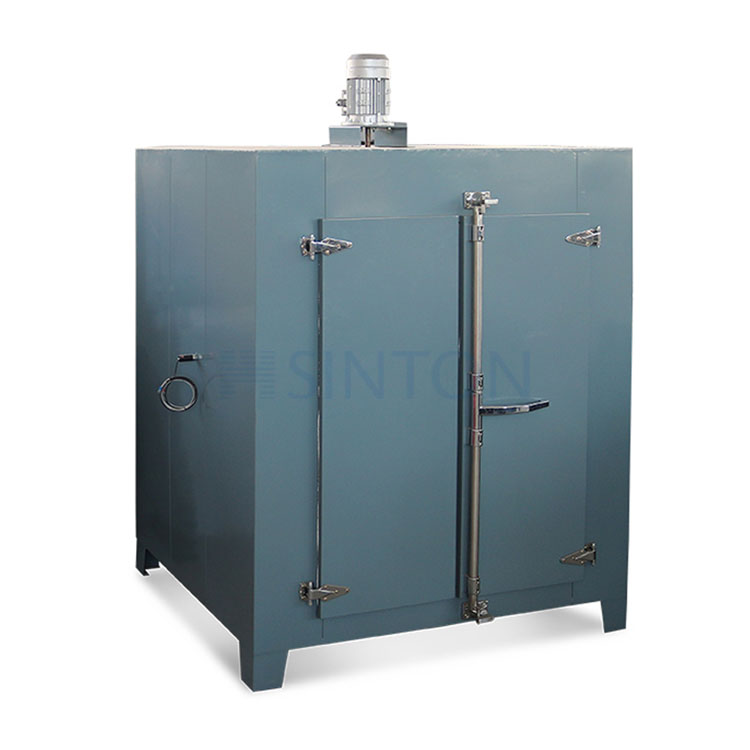WhatsApp: +86-185-5601-8866
Heating Equipment
News

2024-08-01
Ventilation and Airflow Control: Commercial drying ovens employ sophisticated ventilation systems that regulate the airflow within the drying chamber. These systems typically include adjustable vents or dampers that allow operators to control the rate and direction of air circulation. By managing airflow, the oven can effectively exchange moist air with drier air from external sources or internal recirculation loops. This process helps in controlling humidity levels by expelling humid air and introducing drier air, ensuring efficient drying without moisture accumulation.
Dehumidification Systems: Advanced drying ovens often feature integrated dehumidification systems designed to actively reduce humidity levels inside the chamber. These systems utilize various technologies such as desiccant wheels, refrigeration-based condensation, or membrane processes to remove moisture from the circulating air. Desiccant systems absorb moisture onto a solid material which is periodically regenerated, while refrigeration-based systems condense moisture out of the air through cooling coils. Membrane systems selectively permeate water vapor across a semi-permeable membrane, achieving precise humidity control. By lowering the humidity of the air, these systems accelerate drying processes, particularly for sensitive materials that require low-humidity environments to maintain quality and integrity.
Temperature Control: Temperature control is pivotal in managing humidity within drying ovens. Higher temperatures promote faster evaporation of moisture from materials, while lower temperatures coupled with controlled airflow can prevent condensation and maintain optimal drying conditions. Modern ovens employ accurate temperature control systems with PID (Proportional-Integral-Derivative) algorithms or digital controllers that maintain set temperatures within narrow tolerances.
Humidity Sensors and Feedback Control: Many commercial drying ovens are equipped with humidity sensors integrated into their control systems. These sensors continuously monitor relative humidity levels inside the drying chamber, providing real-time feedback to the oven's control unit. Based on this feedback, the control system automatically adjusts parameters such as temperature, airflow rates, and dehumidification settings to maintain a stable and controlled humidity environment throughout the drying cycle. This closed-loop feedback mechanism ensures uniform drying results across batches and optimizes energy efficiency by responding dynamically to changing environmental conditions.
Sealed Chamber Design: Certain drying oven models feature sealed chamber designs to minimize moisture ingress from the surrounding environment. Sealed chambers prevent external humidity from affecting the drying process, maintaining stable and controlled conditions inside the oven. This design is particularly advantageous for applications requiring precise humidity control, such as pharmaceutical manufacturing, electronic component drying, or moisture-sensitive materials testing. Sealed chambers also enhance operational reliability by mitigating the risk of contamination and ensuring consistent drying performance under varying ambient conditions.

Looking For Business Opportunity?
Request for a call today

WhatsApp: +86-185-5601-8866
Tel: +86-185-5601-8866
E-mail: [email protected]
Address: Sinton Building, No. 886 Yandu Road, Yandu District, Yancheng City, Jiangsu Province
Friendly Link: www.cn-lvdao.com www.sealing-china.com
Products
Message